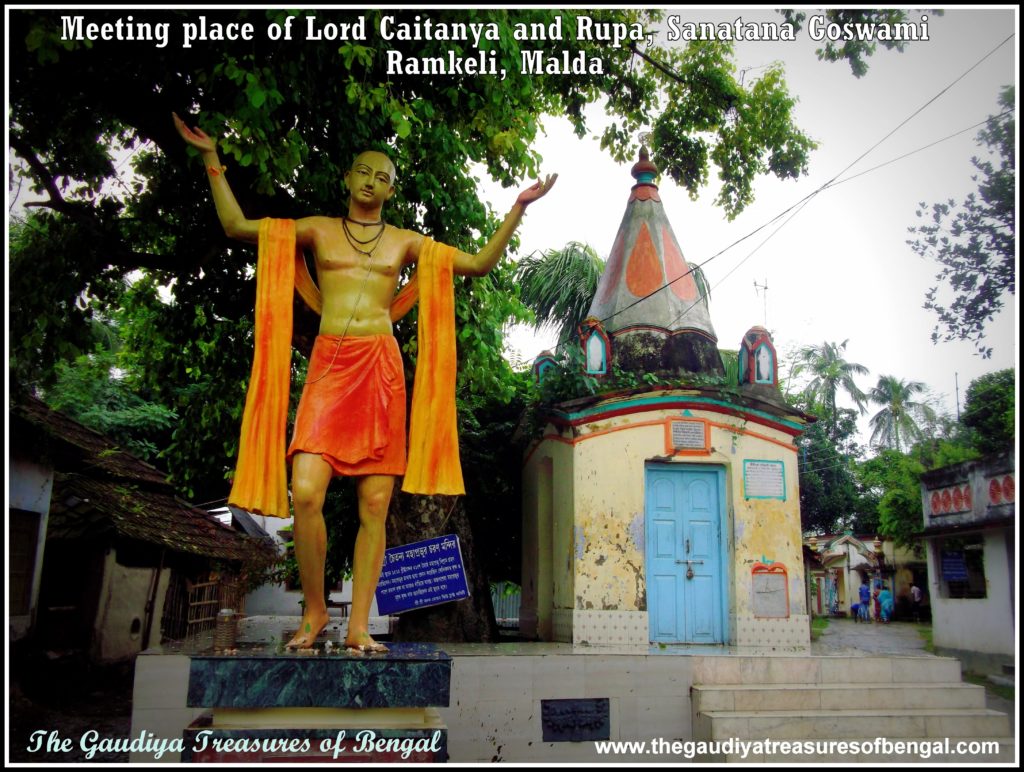
Around 500 years ago (1486 AD), Sri Chaitanya Mahaprabhu, the Supreme Lord, was born at Yogpeeth in Mayapur, West Bengal, India. His divine purpose was to propagate Harinama sankirtana and bless us with the most amazing, profound, and ecstatic pastimes. The Lord is known by various names like Gaura, Gauranga, Gaurahari, Nimai, Gaurasundara, and more. In this article, we will provide a brief summary of the teachings, and biography of Sri Chaitanya Mahaprabhu. The proud parents of Lord Chaitanya were Sri Jagannatha Misra, an eminent brahmana, and Saci Devi. His father, Jagannath Misra, was a poor Brahmin, and his mother, Sachi Devi, was a model woman from a Brahmin family in Sylhet. The day he was born, the moon was eclipsed and people were bathing in the Bhagirathi river, shouting “Haribol”. As a child, he was called Visvambhar by his grandfather and Gaur Hari by the ladies of the town due to his golden complexion. His mother called him Nimai because he was born near a Neem tree (Azadirachta indica). He was loved by all for his beauty and playful nature. Lord Chaitanya’s identity as the Supreme Personality of Godhead is supported by various Vedic scriptures such as Srimad Bhagavatam, Mahabharata, Garuda Purana, Nrsimha Purana, Padma Purana, Bhavishya Purana, Narada Purana, and others. In the following text, we will provide two examples of such references.
aham purno bhavisyami yuga sandhyau visesatah
mayapure navadvipe bhavisyami saci sutah
(Garuda Purana)
–
Translation – In the future, in first part of Kali yuga, I shall appear in my complete spiritual form at Mayapura, Navadvipa and become the son of Saci.
The mission of Lord Chaitanya, along with a description of His golden complexion and how He descends along with His confidential associates in this age of Kali ,to inaugurate the Sankirtana Yajna is revealed in Srimad Bhagavatam (Bhagavata purana) –
Krishna varnam tvishakrishnam sangopangastra-parsadam
yajnaih sankirtana prayair yajanti hi sumedhasah
(Srimad Bhagavatam 11.5.32)
Lord Chaitanya’s teachings have brought people of different nationalities, backgrounds, and cultures together, exemplifying a unity that the United Nations would commend. His teachings have inspired individuals worldwide to forget their external differences and work together in their journey of life, which is important to everyone regardless of social, economic, or geographic status. The practice of congregational chanting of ‘Hare Krishna’ in cities like London, Paris, Tokyo, and New Delhi has its roots in Sri Chaitanya Mahaprabhu’s teachings. Scholars have noted that his life and teachings have no parallel in human history, and even the most skilled researchers cannot fully describe his pastimes.
 Narada Muni recites this wondrous pastime that took place between Shiva and Durga in Kailash. Once Narada muni arrived at Kailash and revealed to Mahadeva how he was somehow able to get a small amount of Lord Vishnu’s Mahaprasadam with great difficulty as Lord Vishnu had previously instructed Lakshmi devi not to share His food remnants with anyone. Lord Shiva expressed His displeasure when he learned that Narada had eaten all the Mahaprasada himself and did not bring any of it for Shiva. This article is a summary of the concerned chapter from Sri Chaitanya Mangala, which reveals Shiva’s love and reverence for Vishnu. Utkala khanda of Brahma Purana is the original source that records these astonishing pastimes.
Narada Muni recites this wondrous pastime that took place between Shiva and Durga in Kailash. Once Narada muni arrived at Kailash and revealed to Mahadeva how he was somehow able to get a small amount of Lord Vishnu’s Mahaprasadam with great difficulty as Lord Vishnu had previously instructed Lakshmi devi not to share His food remnants with anyone. Lord Shiva expressed His displeasure when he learned that Narada had eaten all the Mahaprasada himself and did not bring any of it for Shiva. This article is a summary of the concerned chapter from Sri Chaitanya Mangala, which reveals Shiva’s love and reverence for Vishnu. Utkala khanda of Brahma Purana is the original source that records these astonishing pastimes.






